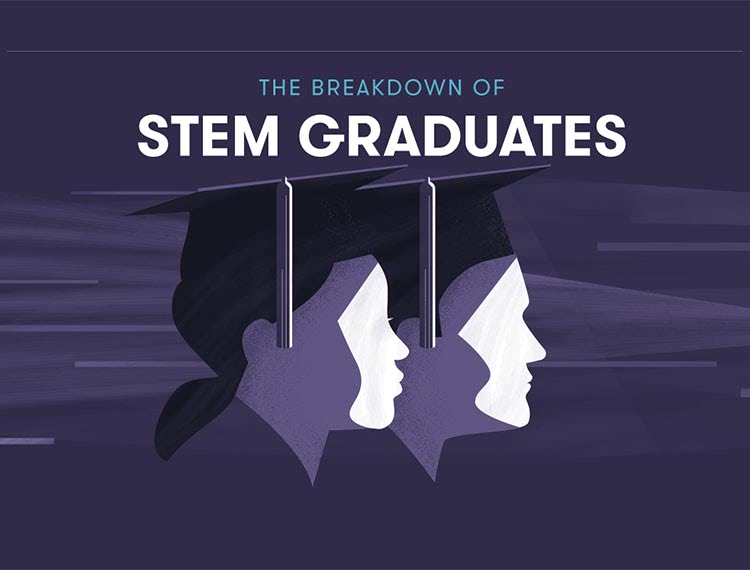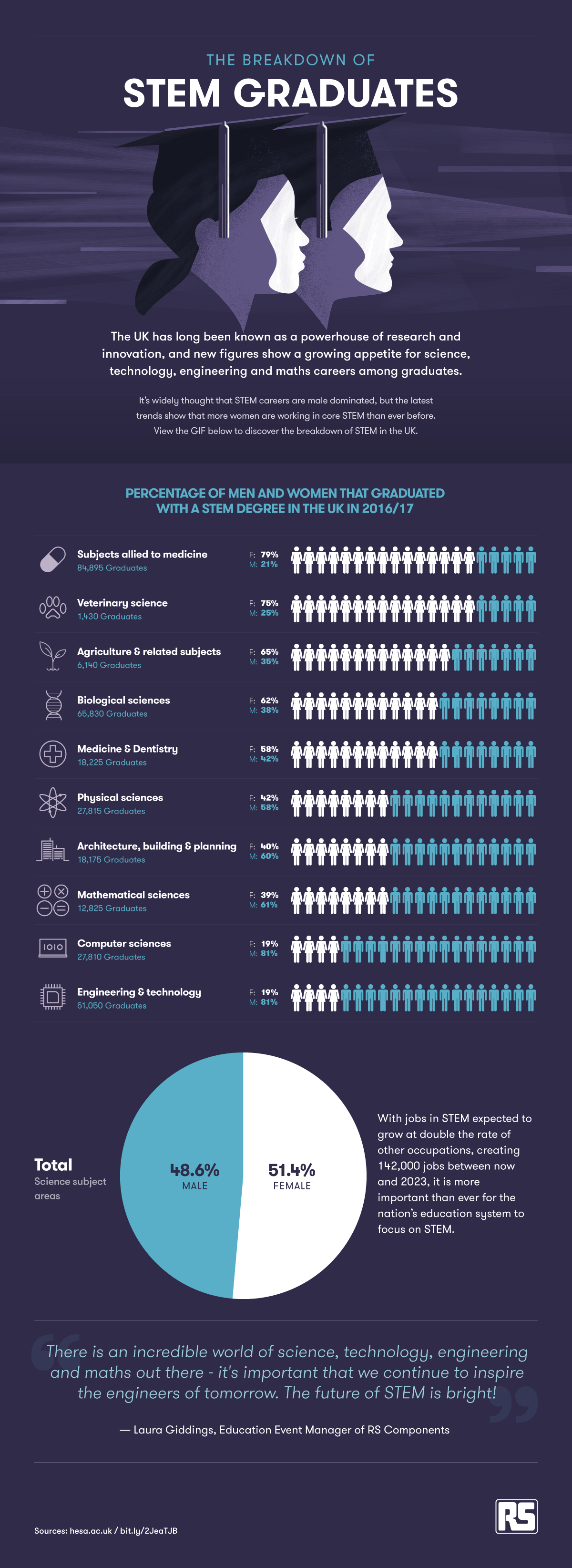Who’s studying STEM? The Breakdown of #STEM Graduates in the UK

Science, technology, engineering and mathematics (STEM) graduates are crucial to the UK economy, with research suggesting jobs are predicted to grow at double the rate of other occupations, creating 142,000 jobs between now and 2023.
One of the main talking points in the media about STEM industries is how companies need to work harder in recruiting more women into technology roles? With 2018 being the Year of the Woman, this discussion has never been more important.
Research reveals that across all of Europe, the UK has the lowest number of females working in engineering, with a disappointing 8.7% of a 640,300 workforce, which is just 55,706 women.
When we compare this to other industries such as teaching, it’s clear more needs to be done in certain areas of the STEM sector, with figures in teachers showing three out of four of them are female and four out of five school employees are also women.
So how do women fair in STEM?

Where are they beginning to lead the way and where is there room for more improvement in terms of gender equality?
Whilst there is currently a stigma around STEM industries being notoriously male-dominated, new insights into who is studying STEM degrees reveals that this is set to change, with some subjects having more female graduates compared to male, such as veterinary science, biological science, medicine and dentistry.
Unfortunately, in other areas, women are still massively underrepresented, for example, computing. Having extensive computer skills is becoming increasingly critical for employment in science and technology roles, so this is a key area that needs to be worked on in recruiting women.
Encouraging women to study STEM degrees at university has never been more important, and whilst we not only want to increase the number of females in these subjects, we need to make the well-paid routes to STEM careers more accessible to them too.
For example, findings suggest computer science students stand good chance of being professionally employed or in further study within six months of leaving university.
Encouraging more people to study STEM and pursue a career in these industries will also work towards reducing the gender imbalance in these areas and help us effectively address – and reduce – the gender pay gap.
The opportunities from studying a STEM degree go further, opening up additional employment options in health care and other skilled trades that require some level of STEM knowledge.
Let’s take a look at the bigger picture:
-
Overall, women made up over half (51.4%) of graduates who gained a STEM degree in 2016/17
-
The most popular degree subject for women were subjects allied to medicine, making up 79% of graduates. Other subjects included veterinary science, biological sciences, and medicine and dentistry
-
The least popular degree subjects for women were both computer science and engineering, with just 19% of women making up each course
-
For men, the most popular degree subject was computer sciences, making up 81% of the total number of graduates in that subject area
-
The least popular degree subject for men were subjects allied to medicine, making up just 21% of all graduates
As the STEM industries are expected to create 142,000 jobs before 2023, it’s arguably the most critical it’s ever been that we ensure our nation places a focus on STEM in our education system.
In order to meet this incoming demand, it’s vital that women and men are encouraged to continue to study STEM-related subjects at school, further education and higher education.
There is an incredible world of science, technology, engineering and maths out there – it’s important that we continue to inspire the engineers of tomorrow! The future of STEM is bright!
Laura Giddings, Education Event Manager, RS Components












Responses